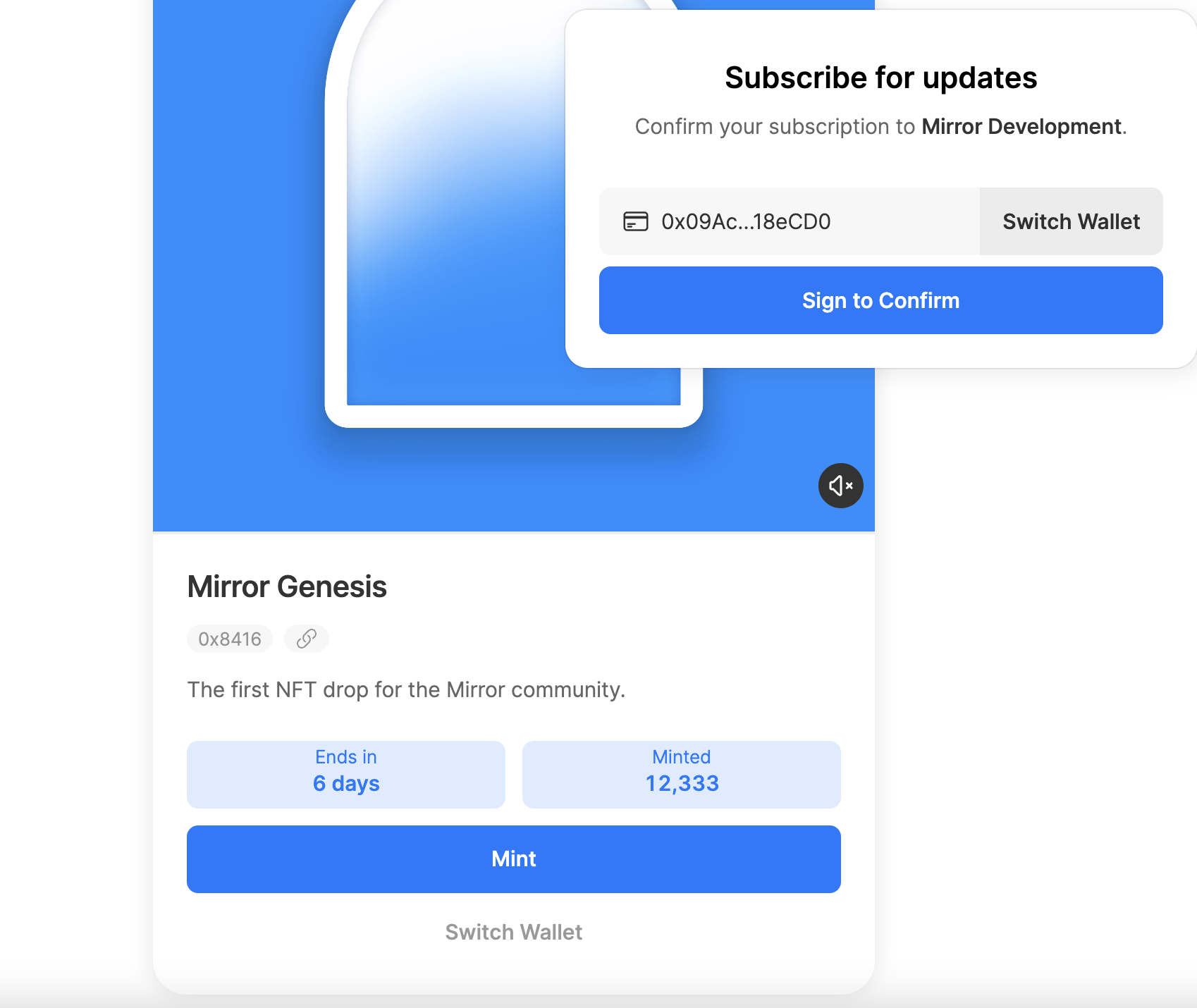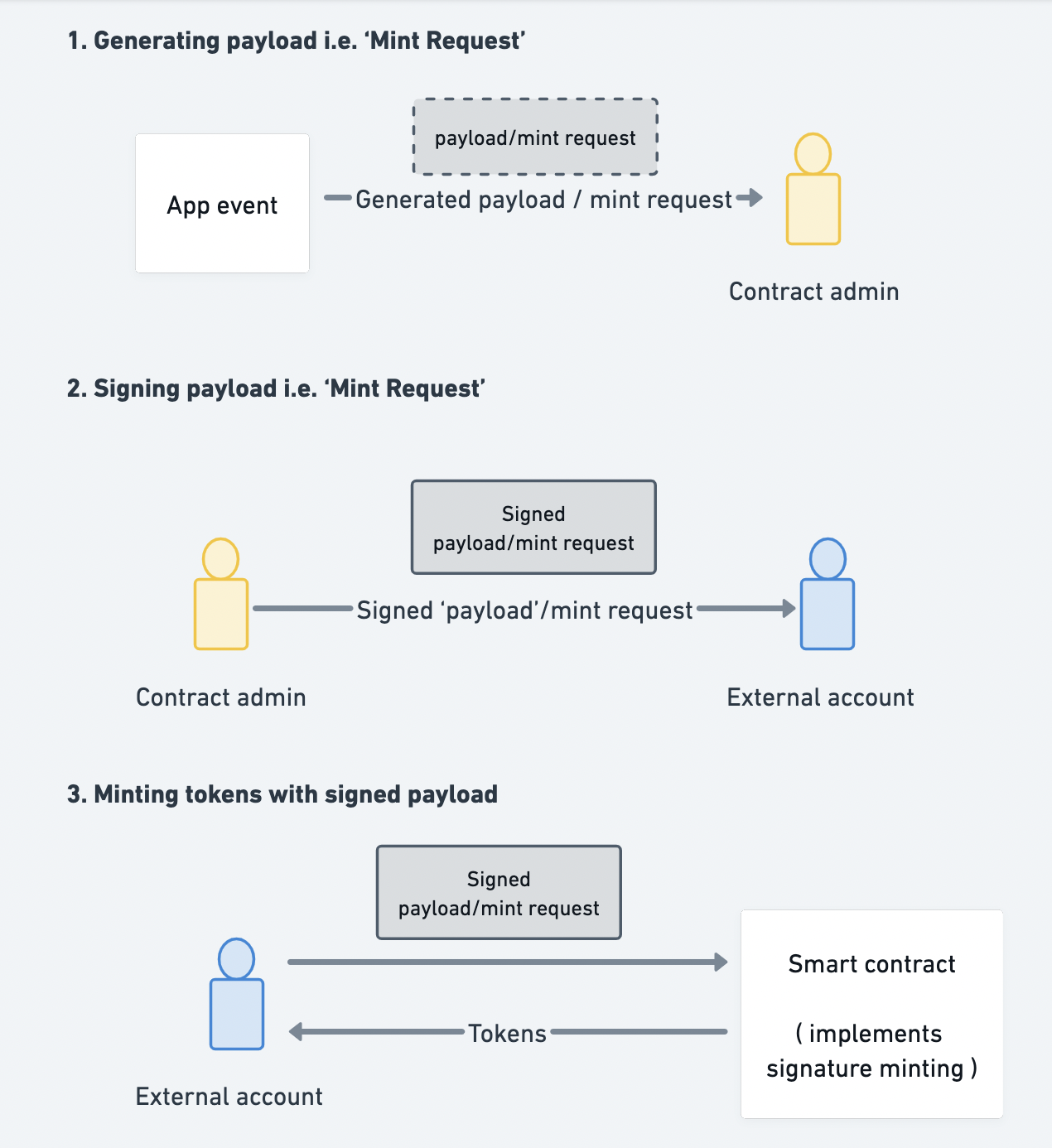‘Subscribe to Mint’ lets creators transform their collectors into an engaged web3 community.

For the last 20 years, hosting long-form written content online required using a Web2 platform with a centralised server. This meant that your content could be subject to censorship or outright removal by a third party.
Mirror introduced a new paradigm - Content which is posted permissionlessly and hosted on a decentralised network: This means that nobody can censor or remove the content from the storage layer, preserving your content permanently.
At thirdweb we’re passionate about accelerating the development of decentralised internet products which empower creators. It was therefore incredibly affirming of our mission to see Mirror build ‘Subscribe to Mint’ using our tools, and in this piece we’re going to break down exactly how they did it.
Learn about what’s under the hood & read along to claim thirdweb’s Genesis NFT on Mirror.
What is Subscribe to Mint?
Mirror’s ‘Subscribe to Mint’ lets publishers supercharge their growth by offering NFTs to readers who subscribe. The drops can be used to celebrate milestones or support wider media campaigns which the publisher may be running.
‘Subscribe to Mint’ works like an open edition drop, but with a Mirror-native twist. In order to mint, a collector needs to subscribe to your project via email. It's a powerful way for creators to bootstrap a communication channel to engage collectors on a recurring basis.

Here are some of the most exciting ‘Mint to Subscribe’ drops on Mirror so far, ranging from some of the largest projects in crypto to independent creators:
thirdweb’s signature-based minting allows Mirror to offer NFTs exclusively to subscribers.
Mirror used the signature-based minting solution to provide a way for publishers to offer NFTs exclusively to subscribers. Signature-based minting allows the platform to verify in real-time and on a user-by-user basis whether a particular wallet can mint the NFT. Since these NFTs are only available to subscribers of the publication, it requires checking the subscription status of the wallet at the moment the user is trying to claim.
How does signature-based minting work?
-
Wallet A generates a signature for a token (specifying name, image, description, properties, and minter address).
-
Wallet B can use the signature provided by Wallet A to mint the NFT.

Publishers then grant signatures for specific wallets to mint tokens with properties they specify in their contract.
Signature-based minting ultimately allows you (the admin wallet) to generate signatures that allow other users to mint tokens on your smart contract.
Mint our first NFT on mirror.
To celebrate the launch of this feature, we’re giving you the opportunity to mint our genesis NFT on Mirror for free (Just pay gas.)
This also marks the launch of our Mirror publication, where we’ll be sharing insights directly from our engineering team into how we’re pushing the Web3 development space forward.
The NFT is minted on Ethereum Mainnet, and you can view the contract here.
Building a better Web3.
At the heart of its efforts, Mirror has been creating more than just a new form of patronage, but a way to build community around a creator’s ideas from the bottom-up. ‘Mint to Subscribe’ is the next iteration of this goal. By taking subscriptions a step further and centering them on a web3 wallet, publishers can create meaningful social and economic links between their audience and project.
If you’d like to learn about how web3 can accelerate your business, reach out to the team, or start building for free.